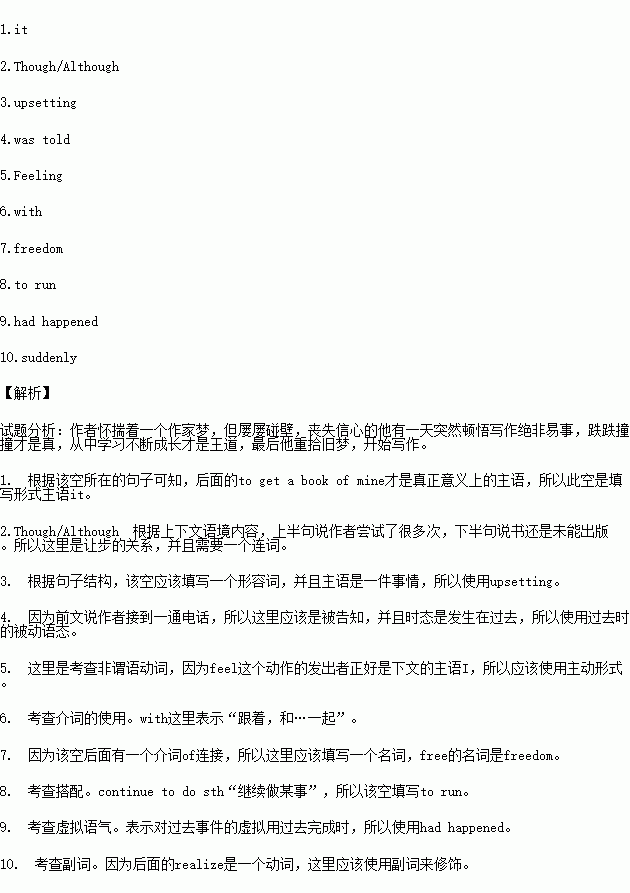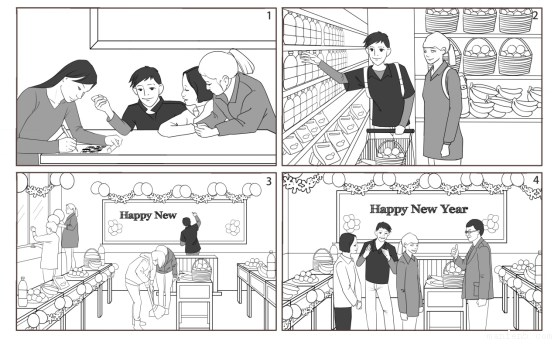题目内容
阅读下面材料,在空白处填入适当的内容(1个单词)或括号内单词的正确形式。
I’ve dreamed of becoming a writer since I was a teenager. But 1.____ isn’t easy to get a book of mine published. 2.___ I’ve tried hard, none of my books have been published. This is really 3._____ (upset).
This morning, I received a call from a publisher and 4.___ (tell) once again that there was no way my book would be published. 5.____ (feel) sad, I left home and went to the park near my apartment. At the park, I sat down on the bench near the grass.
While I was sitting there, I saw a little boy about one and a half years old. He was running on the grass, 6.____ his mother not far behind him. He looked so happy when he enjoyed the 7.____ (free) of running on the grass. He then fell on the grass, but he quickly got up and continued 8.___ (run) as fast as he could again even without looking back at his mother. He was still running with a smile on his face, as if nothing 9.____ (happen).
Seeing that, I was truly inspired. I 10.___ (sudden) realized that I shouldn’t get discouraged after experiencing failure. Instead, I should cheer up and keep on trying.
假定你是李华,是Writing.Com的会员,近日收到如下邮件,邀请你尝试成为付费会员并上传作品。请结合邮件给予回复,解释你之前未上传作品的原因,并提出建议。
Hello, Li Hua! We noticed you’ve never tried a Writing.Com paid membership or upload any writing, so we’re offering you a discount to give it a go… A BIG discount: Take 50% off any paid membership of $19.95 or more. Visit our shop: http://Writing.Com/main/shop/cat/Memberships |
注意:
1. 词数100左右;
2. 可以适当增加细节,以使行文连贯;
3.开头和结尾已给出,不计入总词数。
Dear Sir or Madam,
I have received your email which offers me a big discount. ___________________
_______________________________________________________________________________
_______________________________________________________________________________
_______________________________________________________________________________
_______________________________________________________________________________
_______________________________________________________________________________
_______________________________________________________________________________
_______________________________________________________________________________
_______________________________________________________________________________
_______________________________________________________________________________
_______________________________________________________________________________
Li Hua


